The Great Journey Continues - Halo 2
By Darth_Navster 10 Comments
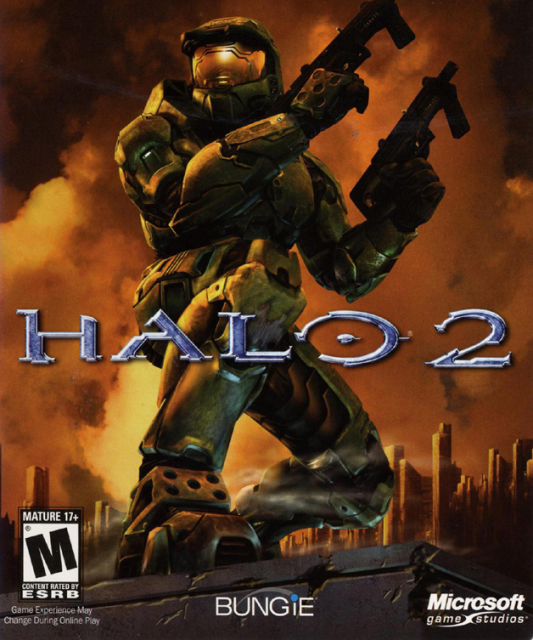
My quixotic quest quietly quacks on! As mentioned last week in my write-up for Halo: Combat Evolved’s campaign, I’ll be running through the single player portion of each Halo in the Master Chief Collection and giving a retrospective write-up on each one. This week I was able to complete what is arguably the star of the collection, Halo 2 Anniversary. With a new prologue as well as remastered graphics and cut-scenes, it’s obvious that the most work went into the storied Xbox sequel when compared to the other games on the disc. But despite the prettied up graphics, does Halo 2 still hold up nearly 12 years later?
Getting the obvious out of the way, Halo 2 wasn’t exactly known for its campaign. The legacy of the game definitely comes from its multiplayer, which was essentially the coming out party for Microsoft’s then fledgling Xbox Live service. The campaign, on the other hand, is not looked at as fondly for two main reasons. The first reason was the abrupt ending which left players with a cliffhanger that wouldn’t be resolved for three years. The second was the introduction of the Arbiter.
It’s strange how 343 Industries used the dual protagonist narrative in its marketing of Halo 5 and explicitly tying that theme to Halo 2’s use of a similar device. Unlike the most recent series entry, the idea of playing as anyone but the Master Chief was not something players cared to do in 2004. For those who are unfamiliar with Halo 2’s twist, the game splits its campaign between that of the Master Chief, Halo’s iconic hero, and a new character named the Arbiter, an Elite that was disgraced for failing to have his fleet stop the Chief from blowing up the titular Halo. While dual protagonists had been done in games before, most notably in Metal Gear Solid 2, Halo 2 changed things up by putting the player in the role of one of the Chief’s sworn enemies. Plot wise this allows the writers to really flesh out the Covenant, who went from a undifferentiated alien menace in Halo: CE to now a complicated hierarchy with complex characters and clashing motivations. It’s great world development and goes a long way in making for a better story this time around. But then why is the introduction of the Arbiter seen as a negative by so many Halo fans?
The structure of Halo 2’s campaign doesn’t do the Arbiter any favors. The game starts not long after the events of Halo, with the Chief in an military station orbiting Earth being feted by humanity for his previous adventure, and the Arbiter being found guilty in a Covenant court for heresy. While the game immediately establishes an intriguing tone with an unprecedented view into the inner workings of the Covenant, the more interesting story line is with the Chief and Cortana. It only serves to make the Arbiter’s story line feel like filler before we get to what is going on with humanity. Still, all is not lost as the early part of the campaign takes place in one of the franchise’s most exotic locales to date; Earth.
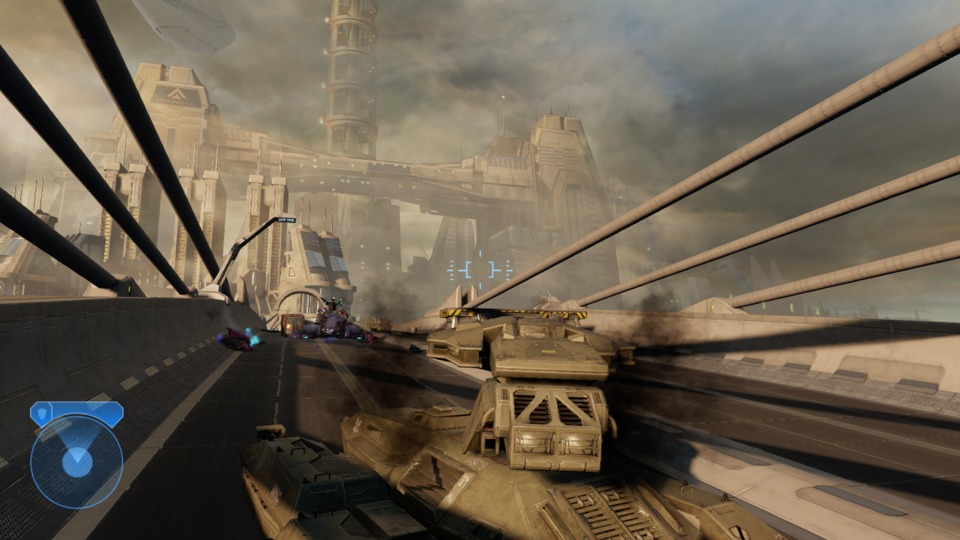
The game smartly spends the first few missions in the Master Chief’s helmet. The game wastes no time introducing a Covenant fleet warping into orbit around the Earth. You are tasked with repelling boarders from a space station designed to defend against starship invasion. It’s a similar start to the previous game, having the Chief defend a human vessel from an overwhelming Covenant force, but it moves at a more assured pace this time around. Gone are the overly explained tutorials on what each button does, and the game goes forward with new tricks, including low gravity combat and the introduction of new wasp-like enemies called Drones. The narrow pathways and limited engagement options in the station force the player to familiarize themselves with the new arsenal of weapons, including the series staple battle rifle and the SMG. The level design also encourages players to experiment with the newly implemented dual wielding mechanic. Firing bullets and plasma rounds at a blistering rate down a hallway to clear out a Covenant swarm never gets old and it’s immediately clear why Bungie chose to make dual wielding a cornerstone of Halo 2’s combat sandbox. After an excellent introduction in space, the Chief is called down to defend Earth on the ground. Finally being able to play Halo on Earth is a breathtaking change of pace. The city you land on, New Mombasa, feels appropriately futuristic, with dense buildings and expansive highways, but also evokes a sense of finally being home after spending so long in the darkest corners of space. The stakes feels substantially higher now that the conflict is on Earth, likely owing to our culture’s fixation with alien invasions in fiction. Gameplay-wise, the levels are now wide open and the game invites you to take different approaches when fighting the enemy. There are vehicles, but they don’t feel substantially different from Halo to warrant much wow factor there. That said, there are some very well done segments with vehicles, with the section involving you rolling past a bridge filled with Covenant in a Scorpion tank being a high point. Sadly, the Earth portion of the game wraps up far too quickly and we are left with a campaign that never matches the promise of its opening.
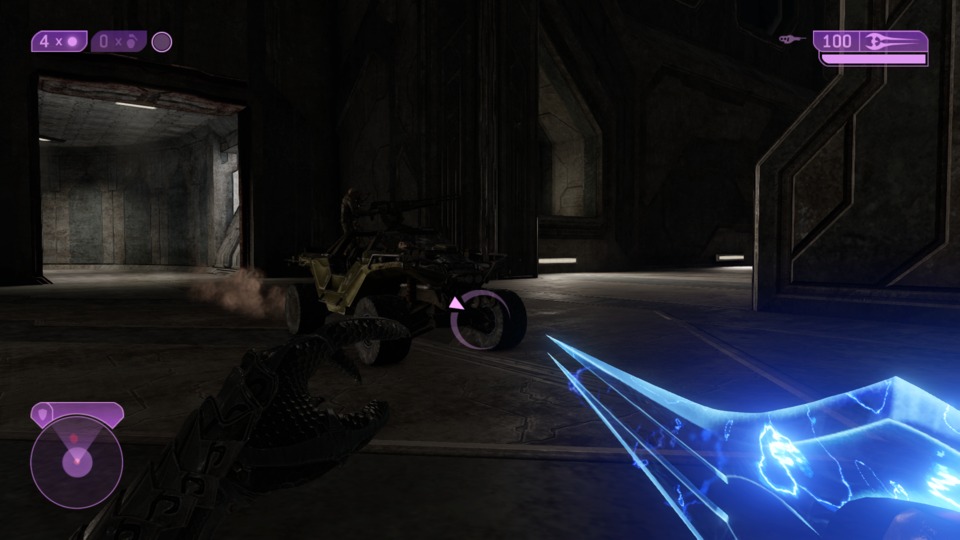
As the Chief and the crew of the starship In Amber Clad pursue a retreating Covenant fleet, we find that the disgraced Elite from the beginning of the game has been given the title of Arbiter, a sort of holy warrior sent out on suicide missions of great importance to the hierarchy. As the Arbiter, your first task is to find and kill a heretical Elite preaching apparent falsehood against the Covenant. It’s all an intriguing setup, and for the first part of the mission it works quite well. The Arbiter’s armor is fitted with a neat cloaking device and for the first time you are able to wield the energy sword, that cool lightsaber looking weapon from the first game that the player couldn’t ever pick up. It was quite fun stealthily picking off enemies and I got pretty far without ever alerting anyone of my presence. Even when I finally got into open combat, the new carbine made for a satisfying replacement to the battle rifle. Unfortunately, the mission quickly turns into a slog with the re-introduction of the Flood. I’m not as down on the Flood as some fans are, but they can be a nuisance when all you have access to are Covenant weapons. Halo has always had an interesting dichotomy in its arsenal, with the human weapons being effective against unshielded enemies and the Covenant weapons being good for taking down shields. Unfortunately, the Flood are mostly unshielded, which made the dozens of plasma rifles, needlers, and even carbines practically useless. By relying on grenades and the limited use energy sword I was able to beat this level after a few tries, but it effectively killed off any momentum that the campaign had. Luckily we transition back to the Chief and his human arsenal to pick up the story.
The next two missions take place on a new Halo that Chief and crew found during their pursuit of the Covenant. While the levels themselves are well designed, the feeling of deja vu from the last game prevents them from completely picking up the lost steam from the Arbiter’s missions. There’s still some good here, though, as the open environments and convenient supply pod drops allow you to really give the battle rifle a good workout. The gun is a great replacement for the pistol from the first game, feeling appropriately powerful and accurate. That said, this section of the game can feel stretched, with two interminably long gondola rides and an underwater section that repeats its environments ad nauseum. The end of this sequence livens things up with a boss fight against one of the High Prophets and a whole bunch of Elites. It’s pretty fun hopping on the Prophet’s throne and punching him to death, followed by a pretty cut scene showing the full size of the Covenant armada. The stakes now being substantially raised, we move on to the endgame.
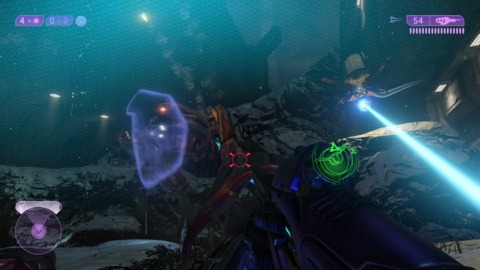
The Arbiter, now on the new Delta Halo, must retrieve the Index, which is essentially the key to activating the Halo and killing all life. As you may have guessed, this mission recalls the infamous Library from the previous game, and while it is a bit better designed, it still can’t be considered a high point. The frustration of using only Covenant weapons is alleviated here as the Flood now are carrying human weapons for you to pick up and use. The shotgun once again gets a chance to shine, but the game also mixes the levels up with vehicle sections in Ghosts, Scorpions, and the new Warthog-like Spectre. It’s also here that you get a good look at the new Sentinel type, the Enforcer, a hulking machine that can shell you with explosive rounds from across the map. There are some fantastic sections of pure chaos, with your Covenant allies, the Flood, and the Sentinels mixing it up. The end of this sequence comes with a twist where the Elites are betrayed by the Covenant and the new ape-like Brutes taking their place. The Arbiter is left for dead, but like the Chief is saved by one of the most divisive additions to Halo 2.
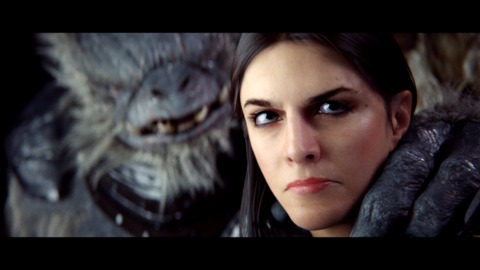
The Gravemind is a part of Halo lore that many fans would choose to forget. This strange fungus-like creature appears to lead the Flood and send off the Chief and the Arbiter to stop the Covenant from activating Delta Halo. The remastered graphics do wonders to improve the Gravemind’s look and makes it a far less ridiculous figure in the lore. That said, the missions he sends our heroes on are far from great. The Chief is sent to High Charity, the Covenant capital city/flagship, where he must fight an enormous amount of Brutes with only Covenant weapons. Unfortunately, the Brutes tend to soak damage and lack shields, making it a mostly frustrating fight with only the needler being effective. The end of the mission turns out to be interesting, however, as the Flood using In Amber Clad crash into High Charity, essentially dooming the floating city to infection. Cortana realizes that the only way to save humanity is for the Chief to follow the Covenant as they head back to Earth while she stays behind to stop the Flood, and it’s an emotional goodbye between the two companions. The Arbiter’s missions lack the same pathos, but are far more interesting to play. Now somewhat allied with the humans, the Arbiter fights through the Brutes to get to Delta Halo’s control room to prevent its activation. The penultimate sequence, in which you escort a Scarab in a Banshee, has such a fantastic sense of scale to it that it makes a great capper to the campaign. The final boss fight against the Brute Chieftain Tartarus is more rote, but works well to conclude the story. The story then wraps up with the Chief saying the infamous “finishing this fight” line and the campaign abruptly ends.
The ending’s abruptness doesn’t seem so frustrating now as it was in 2004 as we now have far more Halo games to continue the story. Still, the arc of Halo 2 is told quite well in that it sets up the occupation of Earth and a civil war within the Covenant for the next game. Sure, having the game end right before the massive battle for Earth stinks of a rushed development that needed to cut content to make a release date, but I will give kudos to Bungie for taking risks with expanding the Halo mythos and giving a proper emotional arc to the Arbiter. Overall, while I think that Halo 2’s campaign has some significant flaws, it is still an improvement over its predecessor. The design and scale show Bungie far more assured in the systems they established and a willingness to make important tweaks to the established formula. The environments are varied and simply sing with the remastered graphics. And of course the core gameplay still holds up with a bigger and better combat sandbox to play in. Halo 2 may not have the best Halo campaign, but it more than lives up to its legacy.